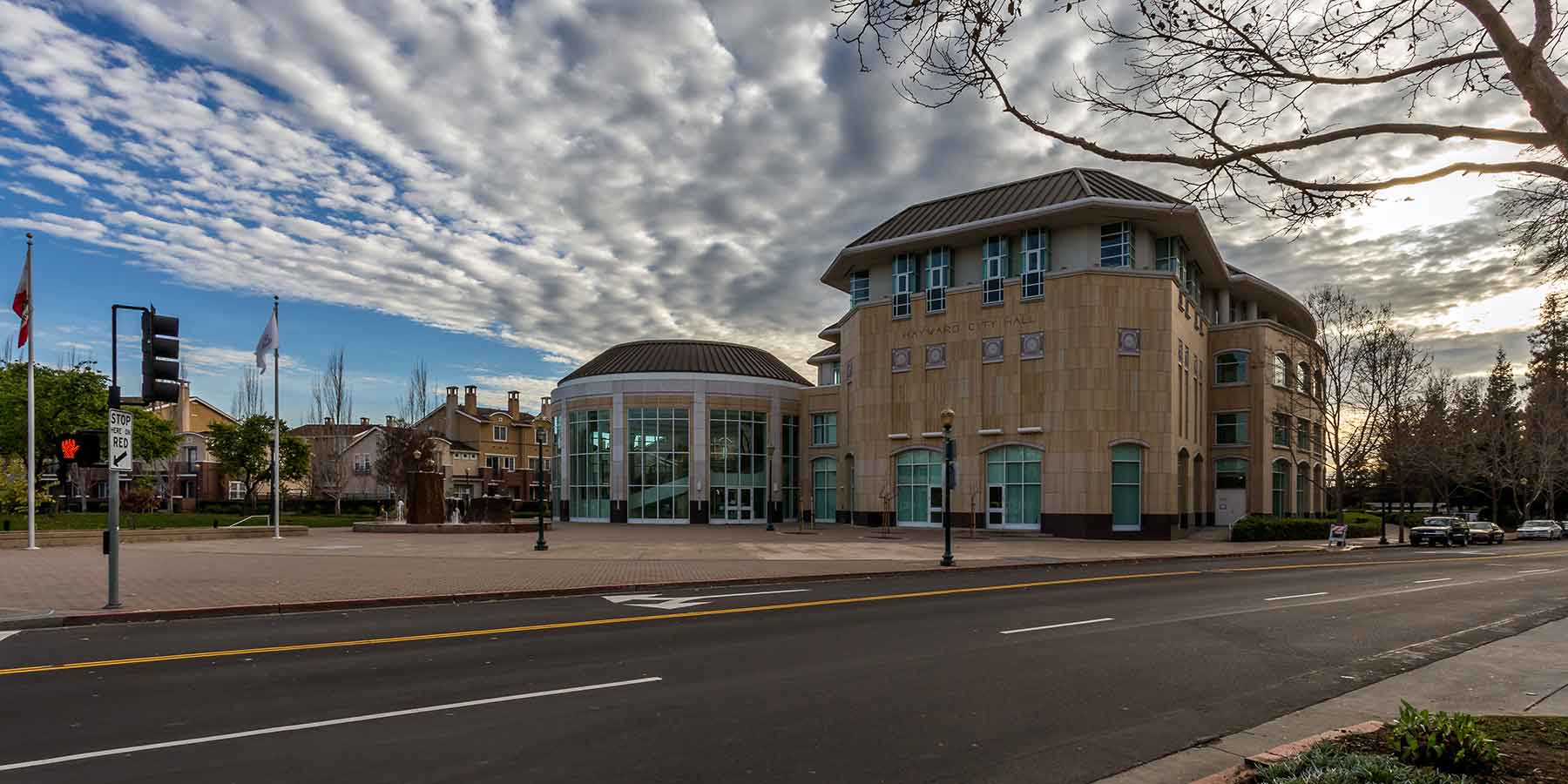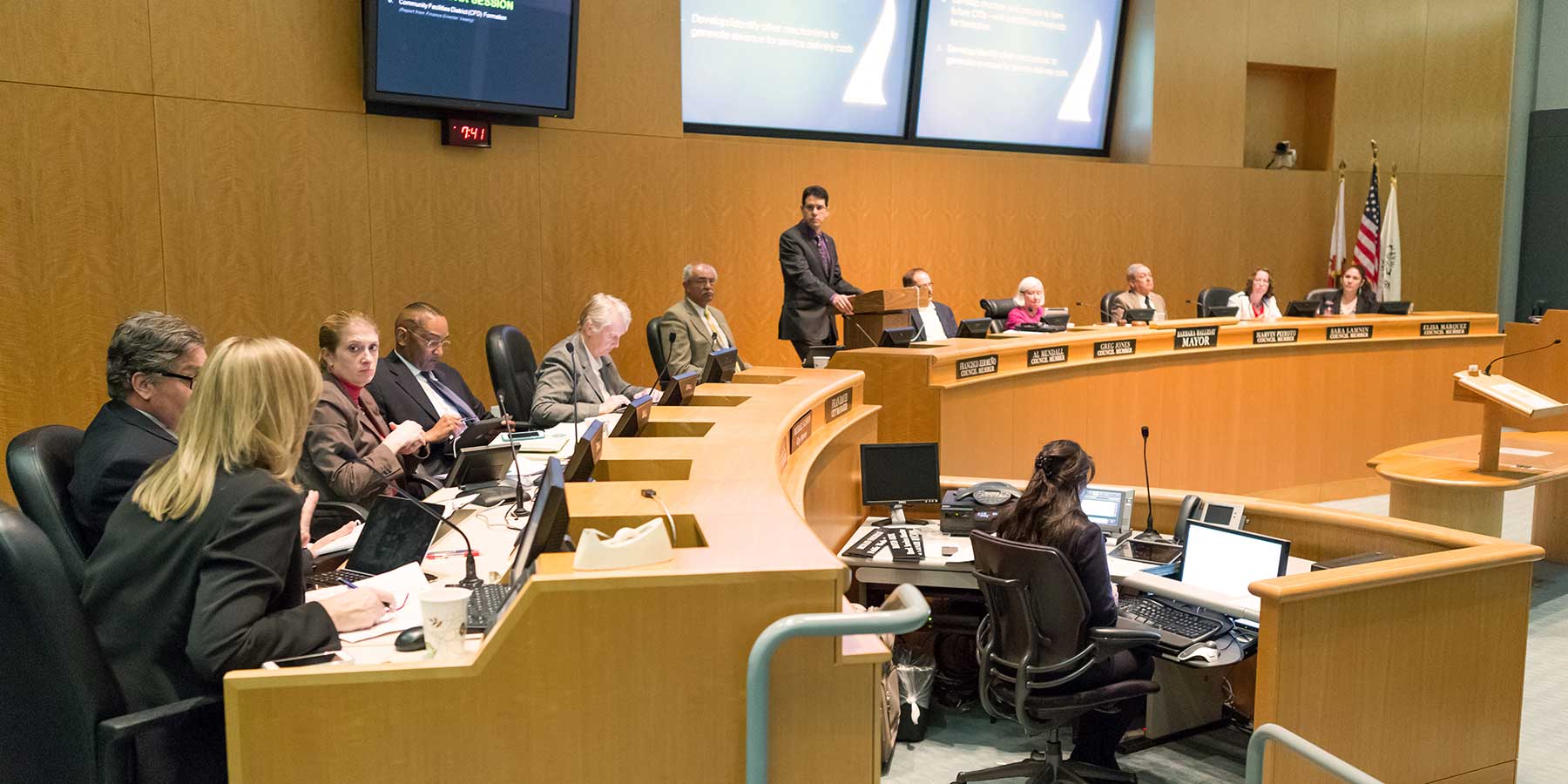Housing Resources
4.1 Introduction
The following section provides a summary of vacant or underutilized land available to accommodate future housing, an overview of the resources available to support continued development, preservation, and rehabilitation of housing in Hayward. The full Sites Inventory analysis is located in Appendix C. This section also includes a list of federal, state, and local programs that provide financial assistance to support the City in meeting its housing goals.
4.2 Land Resources
A critical part of the Housing Element is the Sites Inventory, which identifies a list of sites that are suitable for future residential development. State law mandates that each jurisdiction ensure availability of an adequate number of sites that have appropriate zoning, development standards, and infrastructure capacity to meet its fair share of the regional housing need at all income levels. This inventory of sites is a primary tool that assists in determining if a jurisdiction has enough available land to support its RHNA, given the current regulatory framework.
The City’s available land and adopted Land Use Element of the General Plan offers adequate capacity to accommodate the City’s RHNA for all income categories. Zoning code amendments and rezoning is not necessary to implement the RHNA allocation. New residential development in the City of Hayward is expected to occur primarily in the areas covered by the Downtown Specific Plan, Mission Boulevard Specific Plan, and Former Route 238 Corridor which are in close proximity to commercial services and high frequency transit and allow for high density development.
Accessory Dwelling Units
The City has seen an increasing activity of junior and accessory dwelling units (J/ADUs) since State laws passed in 2018 that facilitated the development of these secondary units. Given the increasing permit applications for J/ADUs in Hayward, this Housing Element assumes credits of J/ ADUs towards the City’s RHNA. Assuming that annual J/ADU permits will average 40 units per year, the City assumes a total of 320 ADUs that will be permitted between 2023 and 2031. The annual projection comes from the average number of permitted ADUs between 2018 and 2021 in the City.
Entitled and Proposed Developments
The Housing Element can apply units in pipelines projects towards RHNA if it can be demonstrated that the units be built by the end of the 6th cycle’s planning period. The City has identified 2,073 units in 32 projects that have been planned, approved, or proposed but not yet permitted. Of these projects, 12 consist solely of market-rate units affordable to above-moderate households, while 20 projects have an affordability component. (see Table C-3 in Appendix C). These projects are generally clustered along the Mission Boulevard Code as well as within Hayward’s Downtown. Figure 2 shows the geographic location of the projects currently in the pipeline in addition to Appendix C, Housing Resources.
Figure 2 - Pipeline Project
Identification of Sites Suitable for Housing
New residential development is expected to occur primarily in the areas covered by the Downtown Specific Plan (DSP), the Mission Boulevard Code area (also known as Mixed Use Corridor PDA), and Former Route 238 Corridor. Development codes in these areas create a vision for resilient, safe, walkable, attractive neighborhoods and allow for high-density mixed-use development. Specifically,
- The DSP shifts from districts solely shaped by allowable uses to a more hybrid approach that accommodates more mix of uses and considers the physical character of development (building form, design, and function) that contribute to neighborhood quality and characteristic. This shift towards a form-based code is intended to provide increased predictability to property owners and developers throughout the development permitting process and achieve more compact walkable neighborhood environment. The Development Code develops Place Types ranging from Neighborhood Edge, Neighborhood General, Urban Neighborhood, Downtown Main Street, Urban Center to achieve an integration of a multi-modal circulation system and new pedestrian oriented public spaces.
- The Mission Boulevard Code implements similar goals for compact and mixed-use development through the application of zoning districts to include: Corridor Neighborhood, Neighborhood Node, Corridor Center, Civic Space, and Planned Development, with applied zoning overlays to regulate portions of the corridor. These include Transit Oriented Development, Commercial Overlay Zone 1 and Commercial Overlay Zone 2.
- Finally, Former Route 238 Corridor will accommodate large-scale, affordable mixed-use projects across the parcel groups. The City has entered into an agreement with Caltrans to dispose of the properties by 2027, thus the City retains ultimate control over the type, density, amenities and amount of affordable housing built on the Caltrans properties.
Estimation of Dwelling Unit Capacity
The Housing Element employs a comprehensive and iterative methodology to estimate dwelling unit capacity on a given parcel. As required by state law, the methodology must include sites that have a high potential to be developed with housing in the cycle, and reflect a reasonable estimate of the dwelling unit capacity of eligible sites that is informed by past trends and substantial evidence. In its methodology, State law has established “default” density standards for the purpose of estimating potential units by income range. In its methodology, the City assumed that realistic development capacity of the chosen sites is less than the full development capacity allowed by the parcel’s zoning or land use designation; however, the City has reviewed and approved projects with Density Bonuses that exceed allowable density during the 5th cycle. See Appendix C, Table C-3 for a table showing the percentage of development relative to the maximum density allowed for Planned, Approved and Pending Projects approved during the 5th Cycle Housing Element.
Steep slopes, protected wetlands or watercourses, open space and parking requirements, and irregularly shaped parcels all impact the ability to achieve the maximum density allowed on the site. Based on that finding, the City assumes the realistic capacity of the Sites Inventory to be 75 percent of the maximum density under the applicable zoning or general plan designation.
Dwelling Unit Capacity Under Current Zoning Code
Under the current zoning code, the City can accommodate a total of 3,449 total units on vacant or underutilized sites in the Downtown Specific Plan (DSP) Area, the Mission Boulevard Code, and Former Route 238 Corridor.
- Downtown Specific Plan – With the maximum allowed density of 110 units per acre, a total of about 20 acres can support the development of nearly 1,606 potential new units in the DSP.
- The Mission Boulevard Code supports varying densities ranging from 35-55 dwelling units per acre to 100 dwelling units per acre, accommodating the potential development of 1,333 new units.
- The Former Route 238 Corridor plan facilitates 510 the development of 510 new units, at the maximum of 35 dwelling units per acre to 55 dwelling units per acre on the remaining sites.
Table 2 shows the dwelling unit capacity of each planning area and Figure 3 shows the geographic locations of the vacant and non-vacant opportunity sites that have been identified as part of this Housing Element.
Table 2 - Current Zoning - Dwelling Unit Capacity
General Plan Land Use Designation | Acres | Number of Parcels | Maximum Allowed Density (dwelling units per acre) | potential new units |
|---|---|---|---|---|
| Downtown Specific Plan Area | ||||
| Central City - High-Density Residential (CC-HDR) | 0.44 | 2 | 110 | 35 |
| Central City - Retail and Office Commercial (CC-ROC) | 19.19 | 27 | 110 | 1,571 |
| Total | 19.63 | 29 | - | 1,606 |
| Mission Boulevard Code | ||||
| Corridor Neighborhood (MB-CN) | 11.7 | 5 | 35 - 55 | 428 |
| Corridor Center (MB-CC) | 6.3 | 7 | 55 - 100 | 466 |
| South Hayward BART Site - Planned Development (PD) | 5.9 | 1 | 100* | 439 |
| Total | 25.2 | 14 | - | 1,333 |
| Former Route 238 Corridor | ||||
| Corridor Neighborhood (MB-CN) | 4.9 | 1 | 35 | |
| Sustained Mixed Use (SMU) | 10.0 | 1 | 35 | 510 |
| Total | 14.9 | 2 | - | 510 |
Summary of Adequate Sites
Based on the current zoning, the City has a surplus of development capacity of 1,218 units including pipeline projects, ADU assumptions, and include both vacant and underutilized sites. About 22 acres of land on 14 sites can facilitate the development of 1,184 lower income units based on the current densities permitted in the respective Zoning Districts resulting in a lower income unit surplus of 294 units. There is also the potential for 938 Moderate income units on 21 sites, resulting in a total moderate income unit surplus of 299 units. In the Mission Boulevard Code area alone, a total of 541 lower-income units can be developed on vacant or underutilized sites. The results of the residential Sites Inventory are presented in Table 3 and further detailed in Table A, Housing Element Sites Inventory of Appendix C, Housing Resources of the Housing Element.
Figure 3 - Opportunity Sites
Table 3 - Residential Dwelling Unit Potential and RHNA
Lower Income | Moderate Income | Above Moderate Income | Total | |
|---|---|---|---|---|
| Table 3 - Residential Dwelling Unit Potential and RHNA | 1,692 | 817 | 2,117 | 4,624 |
| Planned and Approved Units | 610 | 82 | 1,381 | 2,073 |
| ADUs Anticipated | 192 | 96 | 32 | 320 |
| Remaining RHNA | 890 | 639 | 702 | 2,231 |
| Downtown Specific Plan Area | 643 | 486 | 477 | 1,606 |
| Mission Boulevard Code | 541 | 252 | 540 | 1,333 |
| Former Route 238 Corridor | 0 | 200 | 310 | 510 |
| Total Units on Vacant Sites | 433 | 249 | 477 | 1,159 |
| Total Units on Underutilized Sites | 751 | 689 | 850 | 2,290 |
| Total Units on Vacant and Underutilized Sites | 1,184 | 938 | 1,327 | 3,449 |
| Total Unit Surplus | 294 | 299 | 625 | 1,218 |
4.3 Financial Resources
The City of Hayward receives financial resources through government programs that encourage housing production that meets the needs of all income levels. These financial resources are intended to support cities and counties in streamlining processes for affordable housing development, subsidize rents, subsidize the development of rental and ownership housing, and preserving existing housing stock. In addition to government funding, the City implements programs using a variety of local funding including the Inclusionary Housing Fund, the Rental Housing Program Fund, and the General Fund.
Community Development Block Grant Funds
Through the Community Development Block Grant (CDBG) program, HUD provides funds to local governments for a range of community development activities. The primary CDBG objective is the development of viable urban communities, including decent housing, a suitable living environment, and expanded economic opportunity. Eligible activities must meet one of three national objectives: benefit low-and moderate-income families, aid in the prevention of slums or blight, or meet other urgent community development needs.
Hayward utilizes CDBG funds to stabilize neighborhoods, provide public services, and preserve and upgrade the existing housing stock. Annually, the City receives approximately $1.5M to meet these goals. In 2021, the City was awarded $2.1 million in CARES Act CDBG supplemental funding which was used to support programmatic work in response to the COVID-19 pandemic. Much of this programmatic work supported the city’s most vulnerable communities and included Rent Relief Grants and shelter services for unhoused residents.
HOME Investment Partnership Program
Hayward receives an annual entitlement under the Alameda County HOME Consortium. HOME funds can be used for activities that promote affordable rental housing and lower-income 45 homeownership, including but not limited to: building acquisition, new construction, reconstruction, moderate or substantial rehabilitation, first-time homebuyer assistance, and tenant-based assistance. One federal priority for use of these funds is the preservation of at-risk housing stock. In 2021, Hayward was allocated approximately $482,000 in HOME funds.
SB2 Grants
In 2017, Governor Brown signed a 15-bill housing package aimed at addressing the State’s housing shortage and high housing costs. Specifically, it included the Building Homes and Jobs Act (SB 2, 2017), which establishes a $75 recording fee on real estate documents to increase the supply of affordable homes in California. The number of real estate transactions will vary from year to year, and thereby the fees collected are expected to fluctuate.
SB2 Grants provide funding and technical assistance to help cities and counties prepare, adopt and implement plans and process improvements that streamline housing approvals and accelerate housing production. The City will be using these funds to achieve housing goals by completing three projects:
- Rezoning approximately 1,558 properties (approximately 289 acres) zoned Single Family Residential District to Medium or High Density Residential District to match the underlying General Plan designation and creating an overlay zoning district with CEQA review to up zone properties currently zoned for single family and create objective design and development standards to maximize unit potential and allow for a variety of housing types.
- Develop Objective Design Standards to allow for streamlining for compliant projects.
- Update the City’s density bonus with CEQA clearance to allow for tiering. The City will explore ways to provide additional density bonus beyond state law requirements.
Local Early Action Planning (LEAP) Grants
In the 2019-2020 Budget Act, Governor Gavin Newsom allocated $250 million for all regions, cities, and counties to do their part in meeting their identified community needs by prioritizing planning activities that accelerate housing production. With this allocation, HCD established the Local Early Action Planning Grant Program (LEAP) with $119 million for cities and counties. The City of Hayward is utilizing LEAP funding to accelerate housing production and implement the 6th Cycle Housing Element. These actions include:
- Prepare and adopt General Plan Updates (including the 6th Cycle Housing Element update, Environmental Justice Element and Safety Element);
- Develop innovative programs and policies that will be embedded within the updated Housing Element to fund housing development, ownership, and rental opportunities for all income levels and to provide housing-related services and programs for all segments of the population.
- Development an Accessory Dwelling Unit program that analyzes impediments to development of ADUs in Hayward and provide services and strategies to address those impediments.
4.4 Administrative Resources
This section describes administrative resources available to Hayward. These include building, code enforcement, housing programs, and partnerships with nonprofit organizations that help Hayward achieve the goals and objectives laid out in this Housing Element.
City of Hayward Planning Division
The Planning Division of the Development Services Department provides and coordinates development information and services to the public. Specifically, the Planning Division provides staff support to the City Council and Planning Commission in formulating and administering plans, programs, design guidelines and legislation for guiding the city’s development in a manner consistent with the community’s social, economic, and environmental goals.
The Planning Division is tasked with ensuring that land uses and new development in Hayward comply with City codes, the General Plan, City Council and Planning Commission policies, and California law. Approval of projects through the planning process is required before the City issues grading or building permits. Advanced planning programs provided by the division include a comprehensive General Plan update (including periodic update of the Housing Element), preparing and amending specific plans and design guidelines, and conducting special land use studies as directed by the City Council.
City of Hayward Housing Division
The Housing Division of the Development Services Department assists residents in identifying resources to help address their housing needs. The Housing Division oversees and implements the Residential Rent Stabilization and Tenant Protection Ordinance, the Tenant Relocation Assistance Ordinance, the Mobile Home Space Rent Stabilization Ordinance, the Affordable Housing Ordinance and the Housing Trust Fund. The Housing Division provides technical assistance including informational workshops to tenants, property owners, and developers about the various legislation and coordinates funding for and ensures that developers and property owners are compliant with income restrictions for affordable housing. Further, the Housing Division coordinates with the Community Services Division to ensure General Fund and CDBG funding is allocated to homeless service providers, community service providers, fair housing and legal assistance, and assistance to vulnerable populations.
City of Hayward Code Enforcement Division
The Code Enforcement Division of the Development Services Department provides regulatory enforcement services for local, state and federal codes. Through education and responsive enforcement, Code Enforcement works with private property owners, property managers and residents to preserve and promote safe and healthy communities. Code Enforcement oversees the Rental Housing Inspection Program by conducting a combination of mandatory and complaint driven inspections of rental housing. The Residential Rental Inspection Program (RRIP) was adopted in 1989 and is intended to protect residents by providing access to safe and healthy housing. The RRIP applies to all rental housing and all hotel and motel units.
County of Alameda
The Housing Authority of the County of Alameda (HACA) operates several programs funded by the U.S. Department of Housing and Urban Development (HUD) that provide rental housing or rental assistance for low-income families, the elderly, people with disabilities, and others, in much of Alameda County. The programs include:
- Section 8 Housing Voucher Program
- The Project-Based Moderate Rehabilitation Programs
- Section 8 Helping Veterans Achieve Housing Stability – The Veterans Affairs Supportive Housing (VASH) Voucher Program
- Mainstream Voucher Program
- Family Obligations
Affordable Housing Providers
Affordable housing providers are a critical resource for accomplishing the goals and objectives of this Housing Element. This can be accomplished through private/public partnerships. Since 1997, the City of Hayward, the Former Hayward Redevelopment Agency, and the Hayward Housing Authority has been successful in supporting the development of 18 affordable housing projects through private/public partnerships which provide 1,278 units of affordable housing to low and very low-income households. The City continues to expand this portfolio of affordable housing. In 2018, the City Issued a Notice of Funding Availability and awarded development subsidy loans to three non-profit affordable housing development projects that will add an additional 258 units of affordable housing. Additionally in 2021 and 2022, the City negotiated development and disposition agreements with two affordable housing providers to develop an additional 278 units of affordable housing.











